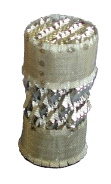Distillation Column Packing Types
There are many types of packing that can be used to fill a packed distillation column. They fall into two main categories, random packing and structured packing.
The geometry of packing is the key to its efficiency. Generally speaking, high free space and high surface area improve efficiency of the packing and decrease back pressure. For random packing the geometry should not have any place for liquid to pool regardless of the orientation of the piece of packing. Packing should also be compatible with the material being distilled.
Pro-Pak is formed from metal ribbon through which more than 1000 tiny holes per square inch have been punched. As the points of the dye push through the metal, jagged burrs are formed on the reverse side of the ribbon. Pro-Pak's self-wetting properties derive from a rectangular network of capillaries on the surface of the metal, produced by the combined effect of the holes in the ribbon and the roughness of the burrs. These properties ensure that Pro-Pak stays wet in service in the distillation column and retains its high efficiency. Because the surface area of the packing remains effective under low liquid loadings, high column efficiency is maintained at vapor velocities very much lower than the flooding velocity.
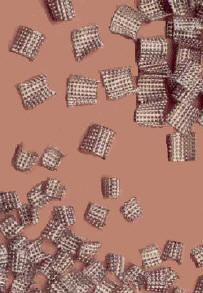
Heli-Pak is formed from a metal wire wound around a twisted rectangular rod. It has a free space of 83%. It is most commonly available in stainless steel but is also available in , nichrome, monel, nickel, hastelloy "B":, bronze, and tantalum.
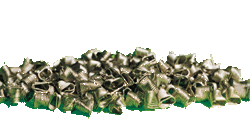
This is an inert packing made of ceramic. It is ideal for corrosive materials or those that will react with metal packing. It is not as efficient as other packing types but is useful for distilling materials that are not compatible with metal.
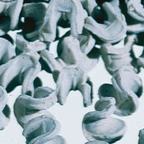
This packing is great for rugged industrial type fractional distillation equipment. It is normally made of stainless steel.
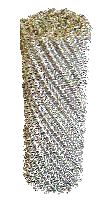
There are other types of high-tech structured packing that are very efficient. These are most commonly available in stainless steel but other materials are also available. These tend to have very high open space values as well as very high costs.
